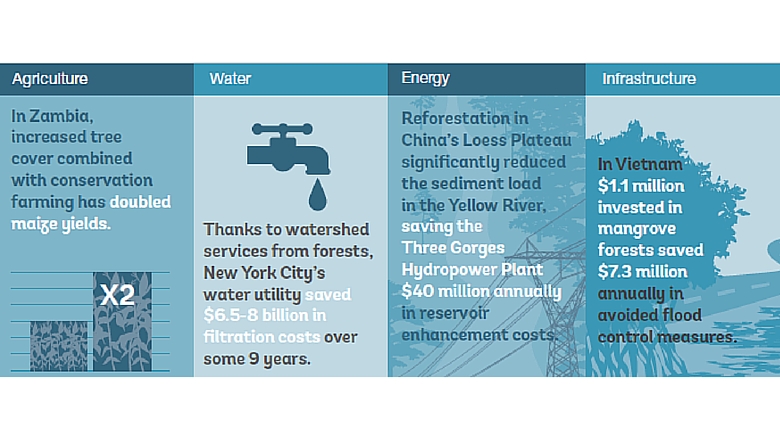Our oceans are dying, they have large and growing areas that have to little nutrients or are too warm for fish to live. Pollution, overfishing and climate change all put pressure on our aquatic species. On land we see the same problem with overuse of natural resources, be they forrests, agricultural soil and fossil fuels, causing rain to disappear and weather patterns to shift.

We believe humanity will use robotic systems to recover from this fossil fuel induced onslaught. We will because it is to hard for people to act as is needed in some of the places it is needed, and because the ones acting on climate may be a small elite existing in protected order while the rest of us will be struggling to survive. As we now see with the ability of fossil fuel to maintain order, as the fossil fuel supply fragments and wanes, the regions on Earth experiencing law and order shrink.

A tree planting robot
Robots can help us, they can even help us help us. The way we see it robots will be smart enough ans sensitive enough to venture into the world and restore nature. They will go where we don’t want to go or where we don’t want humans to go, and tweek the situation so life can regain grip. A great example of that is the contour trenching done in Africa and elsewhere : It is shaping the ground against the forces of erosion, so it absorbs more rainwater, gets vegetated and beats the forces of erosion. This is how a bare hill is turned into a lush forrest, a little tweak.

On our oceans we have the same opportunity, because water near the surface has little nutrients, water deep down has lots, but the light needed to use the nutrients is at the top, and the ocean can be dead. Mix the deep water to the top and you will see life come back. This is what happens in the usually abundand coastal regions, where deep water is forced up by currents.

We want to build a simple drone ship that can do things on our oceans, like mix water, create a fish refuge that not only serves fishermen, but also the fish. To do it we need a platform to have control over our autonomous vessel. We purchased a small sailing boat, well aware there are already drones out there, wingsail catamarans, that’s beautifull.

To control our boat we have a LoPy device, it is a python programmable Cortex M3 chip already connected to a LORA radio and a Wifi transmitter. The nice aspect of this device is that the LORA is easy to program, it is a Long Range Low Power Radio, which can reach about 10 km depending on the height of the antennae and obstacles. Excellent for working on the open ocean. A real drone will have a sattelite telephone ‘Rock’ type device.

To position the boat we use GPS, it is a cheap service these days, 15,- Euro and you have a position reporting component. Our boat will be sailing so it will not have a motor. We worked out the relationship between sail, wind direction. Detecting wind direction is not easy, a more sophisticated way should be deviced, now we have a light turning potentiometer, but we need a magnetic rotary encoder to be more robust and allow the ship to go through the wind.
Python - GPS - Servo control of sail and rudder - Wind sensor (ADC) - Wifi - Lora Total cost when bought new is about 350 Euro Power - 3,7 volt battery - 6 volt pack for servo's
As it stands now we are about to bring to gether the components, the boad will be able to sail courses of up to 35 degrees from dead into the wind, and it can only jibe not tack. This does give better control and wind awareness as the boat has the wind behind it and the model boat we use may not even be able to sail high courses.
Programm : - set sail for wind - gain speed - read gps - check closest indexed waypoint (they must be in a sequential list) - adjust course to best approach new waypoint
The compass is left out for now, the boat will prioritize moving forward and then discover its bearing (by GPS). Then it will calculate the course it must go to get to a waypoint. There are lots of details to coding that. We hope to get to a small vessel that can control itself this way, then make it a bit bigger step by step, the mast now is about a meter high, the next mast is 3 meter high and will carry a wing sail.